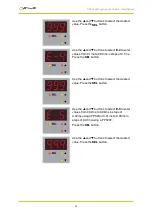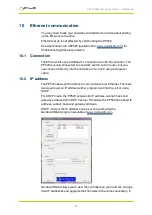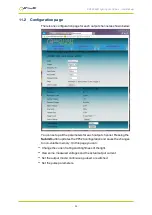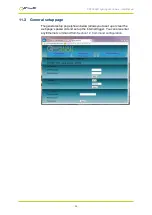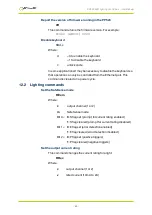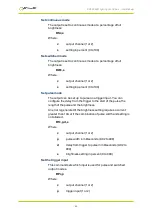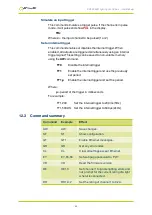
PP520 LED lighting controllers - User Manual
12
Command configuration
The PP520 can be configured through the Ethernet connection using UDP
or TCP/IP. You can enter commands through the unit's web pages or by
using GardasoftMaint (available to download from www.gardasoft.com).
12.1
Command structure
Communication consists of commands sent by the host (controlling PC).
All output generated by the command is returned in reply UDP or TCP/IP
packets. The last character sent is
>
(‘greater than’ symbol). Once this is
received, the host knows that the command has been completed.
We recommend that the host waits for the
>
symbol before sending the
next command. UDP communications are not guaranteed to arrive, so the
host software must be able to cope with lost messages.
Using the
GT
command, a host can request that a message is sent to it
whenever an error occurs.
Several commands can be put into one command line by separating them
by a semi-colon (
;
).The PP520 sends any replies to the commands
followed by a
>
character to show that the command line has completed.
All commands comprise a code of two letters followed by any optional
parameters. All spaces in the commands are ignored.
Numeric parameters are separated by a comma (
,
). For a parameter
which is a time period, the default units are milliseconds. ‘s’, ‘ms’ or ‘us’
can be added to the end of the number to indicate seconds,
millisecondsor microseconds. For currents, ‘A’ or ‘ma’ can be added to
indicate amps or milliamps. The default unit is amps.
Note:
parameters are in ‘USA/UK’ format so that a half is written ‘0.5’ not
‘0,5’. For example:
Parameter
Meaning
0.1
0.1 milliseconds
200μs
200 microseconds
0.1s
0.1 seconds
100mA
100mA
2.45A
2.45A
2.3
2300mA or 2.3A
The command codes and their meaning are described in the remainder of
this section. The upper case commands are shown, followed by lower
case letters denoting the numeric argument.
—
40
—




